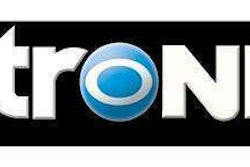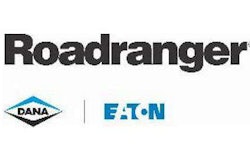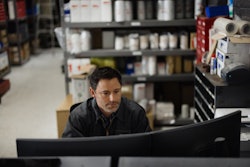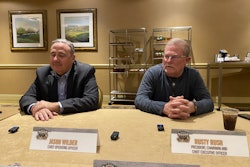Maintaining heavy-duty equipment is a tough job. But during a winter like this one, where polar vortices and arctic temperatures have covered most of North America for months, it can feel downright impossible. Snow, wind, freezing rain, road chemicals and frigid temperatures all have adverse effects on heavy-duty components.
This is especially true for commercial trailers, where nearly all components are completely exposed to winter elements.
To keep a trailer operating at peak performance levels during a winter like this, fleets and owner-operators must be diligent in inspecting equipment for breakdowns and spec’ing the right aftermarket parts.
That’s where your business comes in.
Distributors and independent service shops prepared to serve customers during this punishing weather have a significant advantage in the marketplace.
“[Weather] extremes one way or another can have an effect throughout a trailer,” says Jeff Driver, vice president of sales and marketing for Vanguard National Parts. “In the winter we don’t necessarily see more repairs — but there are a lot more breakdowns.”
Arguably the biggest hindrance to commercial trailers during winter months is corrosion.
“In the winter it doesn’t take long” for corrosion to become a major problem, says Tom Draper, marketing manager at Grote Industries.
Corrosion occurs when water and road chemicals seep into a component and begin compromising the integrity of the product. Though most commonly identified in electrical systems and brakes, corrosion can cause problems throughout a commercial trailer, says Draper.
“Salt water and electricity creates kind of a perfect storm for corrosion,” adds Dennis Damman, national fleet sales manager at Phillips Industries.
Today’s aftermarket suppliers offer a multitude of products designed specifically to minimize the impact of corrosion. When fighting an arctic winter like this one, these are must-stock products.
In the lighting and electrical product category, the options are voluminous.
Most OEMs today offer completely sealed, corrosion resistant electrical harness options for their new trailers. These harnesses commonly come with a warranty, but can begin to break down and incur damage after years of heavy use.
That’s where aftermarket replacement products come in.
“[Electrical] connections exposed to the winter environment must be inspected and maintained or they won’t hold up,” says Damman.
Tim Gilbert, corporate director of heavy-duty sales at Peterson Manufacturing, says his company offers its OEM sealed lighting harness in the aftermarket. Designed specifically to remove the possibility of corrosive chemicals entering an electrical system, Gilbert says the product can replace an aging system in any trailer and provide elite performance.
And because it’s completely sealed, once it has been installed there’s no maintenance requirement. The system is designed specifically to not be altered or unsealed.
That’s a value-added benefit for customers, Gilbert says. “If you don’t take it apart we don’t have to worry about something getting into those connections and causing any failures.”
But not every trailer requires a new electrical system.
“Winter [weather] is obviously stressful for trailer lighting and electrical systems, but physical damage is also another very common failure mode,” adds Brad Van Riper, chief technical officer at Truck-Lite.
In cases of an isolated lighting or electrical failure, aftermarket manufacturers recommend stocking LED lighting products.
Van Riper says new LED lights require less electricity and offer better visual output than incandescent bulbs, and are built to withstand much more harsh operating conditions.
“If you have incandescent lights you’re going to have failures,” says Draper, noting that on average, a fleet of 2,000 trailers will see six incandescent failures per day.
Conversely, when one diode fails in an LED light the rest of the lamp will still work, says Brett Johnson, president and CEO at Optronics.
And that durability isn’t something to sneeze at, he says. When a customer has been forced off the road because vibration knocked out a tail light, they likely don’t want to replace it with the same bulb. Johnson says LED lamps are designed specifically to handle the beating a harsh winter provides.
“I still think the most important part of maintenance is design and technology,” he says, “and producing a light to make sure these [failure] problems never happen.”
After trailer lights, Driver notes brakes, springs, suspensions and landing gear also are commonly susceptible to winter weather-aided problems. The latter of which are not only impacted by weather, but by the destruction winter can have on roadways. Every pothole makes a difference.
“A lot of that is just due to wear. They don’t necessarily break down,” Driver says. “The sheer weight of those jobs and the constant raising and lowering of the trailer has an impact.”
“Breakdowns occur at all times of the year. However, frozen air systems, locked up brakes and water damage occur more in inclement weather,” adds Jack Scarff, director of operations at Wabash National Trailer Centers.
Lonnie Wright, parts and service manager at Timpte’s Council Bluffs, Iowa location, notes that model-specific trailer components also can take a beating during the winter months.
All grain trailers are equipped with specialty trap doors underneath the trailer to allow grain to be unloaded into below-ground pits. Because of their low-riding positions, these trap doors and the bearings required to open them are prime candidates for corrosion from snow and road chemicals.
Wright recommends distributors educate customers to perform basic visual inspections of these components as much as possible. A failure to do so can result in a difficult repair for both parties.
“You really don’t want to have to try and fix that under a loaded trailer,” he says.
Scarff agrees, and notes distributors should be active in recommending inspections to customers when supplying replacement parts. Inspections ensure wearing components are found and immediately replaced — minimizing the risk of larger failures.
“Fleets with regular scheduled maintenance programs consistently have a lower total cost of ownership,” Scarff says.
As for the components themselves, Driver says premium products are the best way to help a customer withstand winter’s barrage. “The value is to buy the more robust product up front,” he says.
Gilbert agrees, adding “The best maintenance is to pay the upfront money on acquisition costs and save money down the road.”
Wright notes those spec’ing decisions also can lead to extended trailer life.
“We have [customers] that are still getting parts for trailers from the 70s,” he says.
That type of customer loyalty is something any distributor should desire.








